Origin: (Robert Langdon Book 5) Read online
Page 41
Instantly, the computer emitted a dull buzz.
INCORRECT PASSWORD.
TRY AGAIN.
Langdon’s heart thundered.
“Ambra—I typed it perfectly! I’m sure of it!” He spun in his chair and looked up at her, fully expecting to see her face filled with fear.
Instead, Ambra Vidal stared down at him with an amused smile. She shook her head and laughed.
“Professor,” she whispered, pointing to his keyboard. “Your caps lock is on.”
At that moment, deep inside a mountain, Prince Julián stood transfixed, staring across the subterranean basilica, trying to make sense of the baffling scene before him. His father, the king of Spain, sat motionless in a wheelchair, parked in the most remote and private section of this basilica.
With a surge of dread, Julián rushed to his side. “Father?”
As Julián arrived, the king slowly opened his eyes, apparently emerging from a nap. The ailing monarch managed a relaxed smile. “Thank you for coming, son,” he whispered, his voice frail.
Julián crouched down in front of the wheelchair, relieved that his father was alive but also alarmed at how dramatically the man had deteriorated in just a few days. “Father? Are you okay?”
The king shrugged. “As well as can be expected,” he replied with surprisingly good humor. “How are you? Your day has been … eventful.”
Julián had no idea how to reply. “What are you doing here?”
“Well, I was tired of the hospital and wanted some air.”
“Fine, but … here?” Julián knew his father had always abhorred this shrine’s symbolic link to persecution and intolerance.
“Your Majesty!” called Valdespino, hurrying around the altar and joining them, breathless. “What in the world!”
The king smiled at his lifelong friend. “Antonio, welcome.”
Antonio? Prince Julián had never heard his father address Bishop Valdespino by his first name. In public, it was always “Your Excellency.”
The king’s uncharacteristic lack of formality seemed to rattle the bishop. “Thank … you,” he stammered. “Are you okay?”
“Simply wonderful,” the king replied, smiling broadly. “I am in the presence of the two people I trust most in the world.”
Valdespino shot an uneasy glance at Julián and then turned back to the king. “Your Majesty, I’ve delivered your son to you as you requested. Shall I leave you two to talk in private?”
“No, Antonio,” the king said. “This will be a confession. And I need my priest at my side.”
Valdespino shook his head. “I don’t think your son expects you to explain your actions and behavior tonight. I’m sure he—”
“Tonight?” The king laughed. “No, Antonio, I am confessing the secret I’ve kept from Julián his entire life.”
CHAPTER 89
ConspiracyNet.com
BREAKING NEWS
CHURCH UNDER ATTACK!
No, not by Edmond Kirsch—by the Spanish police!
Chapel Torre Girona in Barcelona is currently under assault by local authorities. Inside, Robert Langdon and Ambra Vidal are believed to be responsible for the successful launch of Edmond Kirsch’s greatly anticipated announcement, which is now only minutes away.
The countdown has begun!
CHAPTER 90
AMBRA VIDAL FELT a flood of exhilaration as the antique computer pinged happily after Langdon’s second attempt to enter the line of poetry.
PASSWORD CORRECT.
Thank God, she thought as Langdon stood up from the desk and turned to her. Ambra immediately put her arms around him and squeezed him in a heartfelt embrace. Edmond would be so grateful.
“Two minutes and thirty-three seconds,” Winston chimed.
Ambra let go of Langdon, both of them turning to the LCD screens overhead. The center screen displayed a countdown clock she had last seen in the Guggenheim.
Live program begins in 2 minutes 33 seconds
Current remote attendees: 227,257,914
More than two hundred million people? Ambra was stunned. Apparently while she and Langdon were fleeing across Barcelona, the entire world had taken notice. Edmond’s audience has become astronomical.
Beside the countdown screen, the live security feeds continued to play, and Ambra noticed a sudden shift in the police activity outside. One by one, the officers who had been pounding on doors and talking on radios stopped what they were doing, pulled out their smartphones, and stared down into them. The patio outside the church gradually became a sea of pale, eager faces illuminated by the glow of their handheld displays.
Edmond has stopped the world in its tracks, Ambra thought, feeling an eerie sense of responsibility that people around the globe were preparing to view a presentation that would be streaming out of this very room. I wonder if Julián is watching, she thought, then quickly pushed him from her mind.
“The program is now cued,” Winston said. “I believe you’ll both be more comfortable watching in Edmond’s sitting area at the other end of this lab.”
“Thank you, Winston,” Langdon said, ushering Ambra barefoot across the smooth glass floor, past the blue-gray metallic cube, and into Edmond’s sitting area.
Here, an Oriental carpet had been spread out on the glass floor, along with a collection of elegant furniture and an exercise bike.
As Ambra stepped off the glass onto the soft carpet, she felt her body begin to relax. She climbed onto the couch and pulled her feet up beneath her, looking around for Edmond’s television. “Where do we watch?”
Langdon apparently didn’t hear, having walked to the corner of the room to look at something, but Ambra got her answer an instant later when the entire rear wall of the chamber began glowing from within. A familiar image appeared, projected out from inside the glass.
Live program begins in 1 minute 39 seconds
Current remote attendees: 227,501,173
The entire wall is a display?
Ambra stared at the eight-foot-tall image as the lights in the church slowly dimmed. Winston, it seemed, was making them at home for Edmond’s big show.
Ten feet away, in the corner of the room, Langdon stood transfixed—not by the massive television wall, but by a small object he had just spotted; it was displayed on an elegant pedestal as if it were part of a museum exhibition.
Before him, a single test tube was ensconced in a metal display case with a glass front. The test tube was corked and labeled, and contained a murky brownish liquid. For a moment, Langdon wondered if maybe it were some kind of medicine Edmond had been taking. Then he read the name on the label.
That’s impossible, he told himself. Why would this be here?!
There were very few “famous” test tubes in the world, but Langdon knew this one certainly qualified. I can’t believe Edmond owns one of these! He had probably purchased this scientific artifact under the radar for an enormous price. Just like he did with the Gauguin painting in Casa Milà.
Langdon crouched down and peered at the seventy-year-old glass vial. Its masking-tape label was faded and worn, but the two names on the tube were still legible: MILLER-UREY.
The hair on the back of Langdon’s neck stood up as he read the names again.
MILLER-UREY.
My God … Where do we come from?
Chemists Stanley Miller and Harold Urey had conducted a legendary scientific experiment in the 1950s attempting to answer that very question. Their bold experiment had failed, but their efforts had been lauded worldwide and been known ever since as the Miller-Urey experiment.
Langdon recalled being mesmerized in high school biology class to learn how these two scientists had attempted to re-create the conditions at the dawn of earth’s creation—a hot planet covered by a churning, lifeless ocean of boiling chemicals.
The primordial soup.
After duplicating the chemicals that existed in the early oceans and atmosphere—water, methane, ammonia, and hydrogen—Miller and Urey heated the c
oncoction to simulate the boiling seas. Then they shocked it with electric charges to mimic lightning. And finally, they let the mixture cool, just as the planet’s oceans had cooled.
Their goal was simple and audacious—to spark life from a lifeless primal sea. To simulate “Creation,” Langdon thought, using only science.
Miller and Urey studied the mixture in hopes that primitive microorganisms might form in the chemical-rich concoction—an unprecedented process known as abiogenesis. Sadly, their attempts to create “life” from lifeless matter did not succeed. Rather than life, they were left with nothing but a collection of inert glass vials that now languished in a dark closet at the University of California in San Diego.
To this day, Creationists still cited the Miller-Urey Experiment’s failure as scientific proof that life could not have appeared on earth without help from the hand of God.
“Thirty seconds,” Winston’s voice boomed overhead.
Langdon’s thoughts spun as he stood up and stared into the darkened church around them. Just minutes ago, Winston had declared that science’s greatest breakthroughs were those that created new “models” of the universe. He had also said that MareNostrum specialized in computer modeling—simulating complex systems and watching them run.
The Miller-Urey Experiment, Langdon thought, is an example of early modeling … simulating the complex chemical interactions occurring on primordial earth.
“Robert!” Ambra called from across the room. “It’s starting.”
“On my way,” he replied, moving toward the couch, suddenly overwhelmed by the suspicion that he might just have glimpsed a part of what Edmond had been working on.
As he crossed the floor, Langdon recalled Edmond’s dramatic preamble above the Guggenheim’s grassy meadow. Tonight, let us be like the early explorers, he had said, those who left everything behind and set out across vast oceans. The age of religion is drawing to a close, and the age of science is dawning. Just imagine what would happen if we miraculously learned the answers to life’s big questions.
As Langdon took his seat beside Ambra, the massive wall display began broadcasting a final countdown.
Ambra was studying him. “Are you okay, Robert?”
Langdon nodded as a dramatic soundtrack filled the room, and Edmond’s face materialized on the wall before them, five feet tall. The celebrated futurist looked thin and tired, but he was smiling broadly into the camera.
“Where do we come from?” he asked, the excitement in his voice rising as the music faded. “And where are we going?”
Ambra took Langdon’s hand and gripped it anxiously.
“These two questions are part of the same story,” Edmond declared. “So let’s start at the beginning—the very beginning.”
With a playful nod, Edmond reached into his pocket and pulled out a small glass object—a vial of murky liquid bearing the faded names Miller and Urey.
Langdon felt his heart race.
“Our journey begins long ago … four billion years before Christ … adrift in the primordial soup.”
CHAPTER 91
SEATED BESIDE AMBRA on the couch, Langdon studied Edmond’s sallow face projected on the glass display wall and felt a pang of sorrow knowing that Edmond had been suffering in silence from a deadly disease. Tonight, however, the futurist’s eyes shone with pure joy and excitement.
“In a moment, I’ll tell you about this little vial,” Edmond said, holding up the test tube, “but first, let’s take a swim … in the primordial soup.”
Edmond disappeared, and a lightning bolt flashed, illuminating a churning ocean where volcanic islands spewed lava and ash into a tempestuous atmosphere.
“Is this where life commenced?” Edmond’s voice asked. “A spontaneous reaction in a churning sea of chemicals? Or was it perhaps a microbe on a meteorite from space? Or was it … God? Unfortunately, we can’t go back in time to witness that moment. All we know is what happened after that moment, when life first appeared. Evolution happened. And we’re accustomed to seeing it portrayed something like this.”
The screen now showed the familiar timeline of human evolution—a primitive ape slouching behind a line of increasingly erect hominids, until the final one was fully erect, having shed the last of his body hair.
“Yes, humans evolved,” Edmond said. “This is an irrefutable scientific fact, and we’ve built a clear timeline based on the fossil record. But what if we could watch evolution in reverse?”
Suddenly Edmond’s face started growing hair, morphing into a primitive human. His bone structure changed, becoming increasingly apelike, and then the process accelerated to an almost blinding pace, showing glimpses of older and older species—lemurs, sloths, marsupials, platypuses, lungfish, plunging underwater and mutating through eels and fish, gelatinous creatures, plankton, amoebas, until all that was left of Edmond Kirsch was a microscopic bacterium—a single cell pulsating in a vast ocean.
“The earliest specks of life,” Edmond said. “This is where our backward movie runs out of film. We have no idea how the earliest life-forms materialized out of a lifeless chemical sea. We simply cannot see the first frame of this story.”
T=0, Langdon mused, picturing a similar reverse movie about the expanding universe in which the cosmos contracted down to a single point of light, and cosmologists hit a similar dead end.
“‘First Cause,’” Edmond declared. “That’s the term Darwin used to describe this elusive moment of Creation. He proved that life continuously evolved, but he could not figure out how the process all started. In other words, Darwin’s theory described the survival of the fittest, but not the arrival of the fittest.”
Langdon chuckled, having never heard it stated quite that way.
“So, how did life arrive on earth? In other words, where do we come from?” Edmond smiled. “In the next few minutes, you’ll have an answer to that question. But trust me, as stunning as that answer is, it’s only half of tonight’s story.” He looked directly into the camera and gave an ominous grin. “As it turns out, where we come from is utterly fascinating … but where we are going is utterly shocking.”
Ambra and Langdon exchanged a perplexed look, and although Langdon sensed this was more of Edmond’s hyperbole, the statement left him feeling increasingly uneasy.
“Life’s origin …,” Edmond continued. “It has remained a profound mystery since the days of the first Creation stories. For millennia, philosophers and scientists have been searching for some kind of record of this very first moment of life.”
Edmond now held up the familiar test tube containing the murky liquid. “In the 1950s, two such seekers—chemists Miller and Urey—ran a bold experiment that they hoped might unveil exactly how life began.”
Langdon leaned over and whispered to Ambra, “That test tube is right over there.” He pointed to the display pedestal in the corner.
She looked surprised. “Why would Edmond have it?”
Langdon shrugged. Judging from the strange collection of items in Edmond’s apartment, this vial was probably just a piece of scientific history that he wanted to own.
Edmond quickly described Miller and Urey’s efforts to re-create the primordial soup, trying to create life within a flask of nonliving chemicals.
The screen now flashed a faded New York Times article from March 8, 1953, titled “Looking Back Two Billion Years.”
“Obviously,” Edmond said, “this experiment raised some eyebrows. The implications could have been earth-shattering, especially for the religious world. If life magically appeared inside this test tube, we would know conclusively that the laws of chemistry alone are indeed enough to create life. We would no longer require a supernatural being to reach down from heaven and bestow upon us the spark of Creation. We would understand that life simply happens … as an inevitable by-product of the laws of nature. More importantly, we would have to conclude that because life spontaneously appeared here on earth, it almost certainly did the same thing elsewhere in the co
smos, meaning: man is not unique; man is not at the center of God’s universe; and man is not alone in the universe.”
Edmond exhaled. “However, as many of you may know, the Miller-Urey experiment failed. It produced a few amino acids, but nothing even closely resembling life. The chemists tried repeatedly, using different combinations of ingredients, different heat patterns, but nothing worked. It seemed that life—as the faithful had long believed—required divine intervention. Miller and Urey eventually abandoned their experiments. The religious community breathed a sigh of relief, and the scientific community went back to the drawing board.” He paused, an amused glimmer in his eyes. “That is, until 2007 … when there was an unexpected development.”
Edmond now told the tale of how the forgotten Miller-Urey testing vials had been rediscovered in a closet at the University of California in San Diego after Miller’s death. Miller’s students had reanalyzed the samples using far more sensitive contemporary techniques—including liquid chromatography and mass spectrometry—and the results had been startling. Apparently, the original Miller-Urey experiment had produced many more amino acids and complex compounds than Miller had been able to measure at the time. The new analysis of the vials even identified several important nucleobases—the building blocks of RNA, and perhaps eventually … DNA.
“It was an astounding science story,” Edmond concluded, “relegitimizing the notion that perhaps life does simply happen … without divine intervention. It seemed the Miller-Urey experiment had indeed been working, but just needed more time to gestate. Let’s remember one key point: life evolved over billions of years, and these test tubes had been sitting in a closet for just over fifty. If the timeline of this experiment were measured in miles, it was as if our perspective were limited to only the very first inch …”
He let that thought hang in the air.
“Needless to say,” Edmond went on, “there was a sudden resurgence in interest surrounding the idea of creating life in a lab.”

 Angels & Demons
Angels & Demons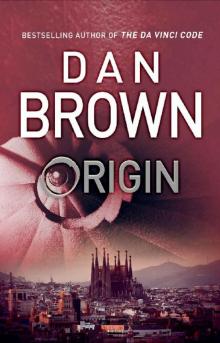 Origin
Origin The Da Vinci Code
The Da Vinci Code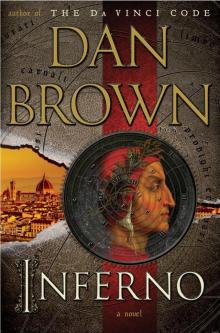 Inferno
Inferno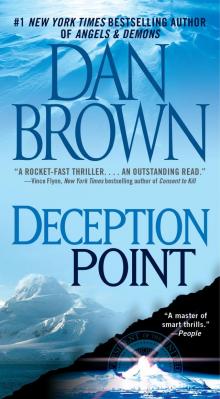 Deception Point
Deception Point Digital Fortress
Digital Fortress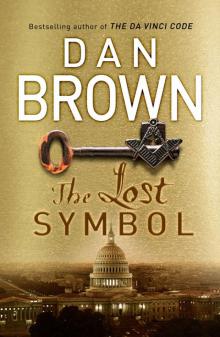 The Lost Symbol
The Lost Symbol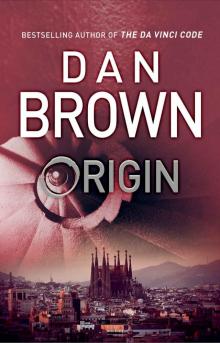 Origin: (Robert Langdon Book 5)
Origin: (Robert Langdon Book 5) Angles & Demons
Angles & Demons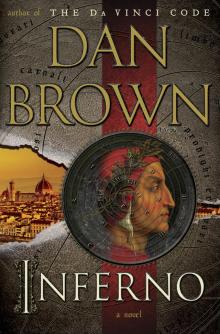 Inferno: A Novel
Inferno: A Novel Angels & Demons rl-1
Angels & Demons rl-1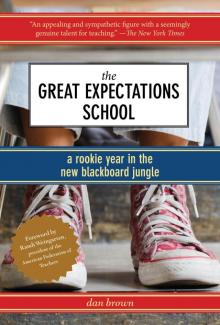 The Great Expectations School
The Great Expectations School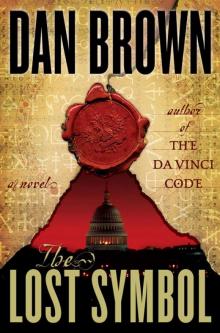 The Lost Symbol rl-3
The Lost Symbol rl-3 Angels and Demons
Angels and Demons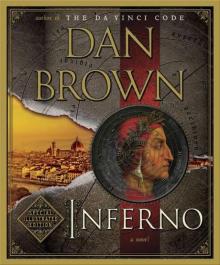 Inferno: Special Illustrated Edition: Featuring Robert Langdon
Inferno: Special Illustrated Edition: Featuring Robert Langdon